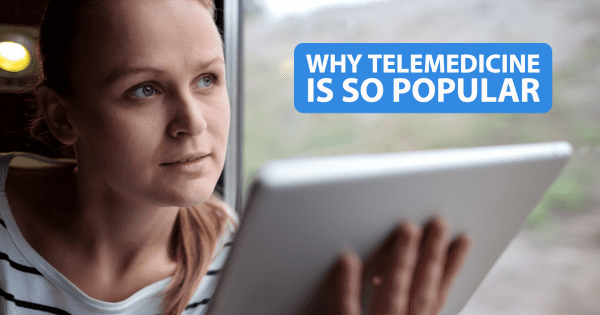How Telemedicine is Changing the Medical Landscape for Patients Suffering From Opioid Addiction

In the late 1990s, healthcare providers began to prescribe opioid pain relievers at greater rates after pharmaceutical companies reassured them it would not cause addiction. This led to a misuse of these medications before it was known that they were highly addictive. As opioid overdose rates began to increase, the era of the opioid crisis began to rise as well.
In 2019 nearly 50,000 Americans died as a result of opioid-involved overdoses, including prescription pain relievers, heroin, and fentanyl (a synthetic opioid). This has become one of the United States’ worst-ever national drug crises affecting public health and bringing an economic burden of nearly $78.5 billion a year for addiction treatment, criminal justice involvement, and lost productivity.
More than 1,300 people a week die from opioid-related overdoses, and millions of Americans suffer from opioid addiction. The opioid epidemic is still going strong throughout the United States. But in rural towns with limited access to specialized treatment, heroin addicts have few options for recovery.
Addiction is a tough illness to treat in the best of circumstances. Addicts can often be 100% committed to getting help one day and fall into relapse the next day. Those in active addiction can also have trouble paying for and keeping regular appointments with doctors. For those who live in rural areas, local resources for substance abuse may be nonexistent.
In urban areas, doctors and clinics can prescribe addiction-curbing drugs that help to recover addicts cope with withdrawal from heroin and painkillers. Even if there are doctors within reach for rural patients, it’s unlikely that they are equipped and accredited to treat opioid addiction.
Effective Medications
Methadone, buprenorphine, and naltrexone are the three FDA-approved drugs that treat opioid dependency, but some are more effective and safe than others. Buprenorphine, best known by its trade name Suboxone, is fast replacing Methadone, which is often abused in the same ways that heroin and other opioids are. Today, most experts agree that Suboxone is much more effective in fighting addiction.
However, there is a very long waiting list for heroin addicts to be prescribed Suboxone. Due to very strict regulations, it is hard for most doctors to write or distribute prescriptions of the drug, especially those who practice in small towns with limited populations.
Studies show that once treatment is initiated, the combination of buprenorphine and naltrexone is effective in treating this particular addiction. Nevertheless, since naltrexone requires full detoxification, initiating the treatment is more difficult with this medication. Treatment is not exclusive to medications only, patients should also rely on behavioral counseling for a “whole patient” approach.
Telemedicine in Opioid Treatment
Already, common excuses for not visiting a doctor are that the office is too far out of the way, appointments take up too much time, or that the patient is too weak to make it. This is why policymakers agree that more widespread access to MAT (medication-assisted treatment) is desperately needed. Some of these strategies include providing medication-assisted treatment via telemedicine.
With the addition of new technology, speaking with a doctor is easier to do than ever before. Telemedicine benefits isolated patients by allowing them to see and speak to a doctor in real-time, in lieu of an in-person appointment. For those in rural communities, remote doctor consultations are effective in making sure that these individuals are getting the care and treatment that they need and deserve, despite living in underserved areas. That means all a patient needs to get access to Suboxone is an internet connection.
Telemedicine has the potential to provide direct-to-patient or specialty consultation services from afar and help mitigate the opioid epidemic. There are some limitations to this concerning medical prescriptions. A more realistic option for telemedicine to treat opioid addiction is Buprenorphine, which can be prescribed in office-based settings. Providers must obtain a federal waiver to prescribe Buprenorphine, but as this treatment has demonstrated effectiveness policy around these waivers has relaxed in recent years.
At least 6 states (Delaware, Florida, Indiana, Michigan, Ohio, and West Virginia) currently allow telemedicine-controlled substance prescribing without an in-person examination. Indiana’s telemedicine law is particularly thoughtful as it allows the remote prescribing of buprenorphine and also attempts to address the opioid epidemic by limiting remote access to most prescription opioids.
Opioid Use Disorder (OUD) continues to devastate nearly 71,000 families and communities in the United States. This is why telemedicine represents an integral component to comprehensively tackling the opioid crisis. However, serious obstacles must be overcome to allow more addiction treatment centers and mental health centers to register with the DEA as clinics and enable them to prescribe controlled substances via telemedicine without a previous in-person examination.
For several other chronic conditions, telemedicine benefits could be immense. At Peace Medical we offer Drug Detox therapy via Telemedicine for patients located anywhere in Florida. To learn more about how telemedicine can help yourself or your loved one overcome opioid addiction, contact Florida’s Peace Medical before it’s too late.



